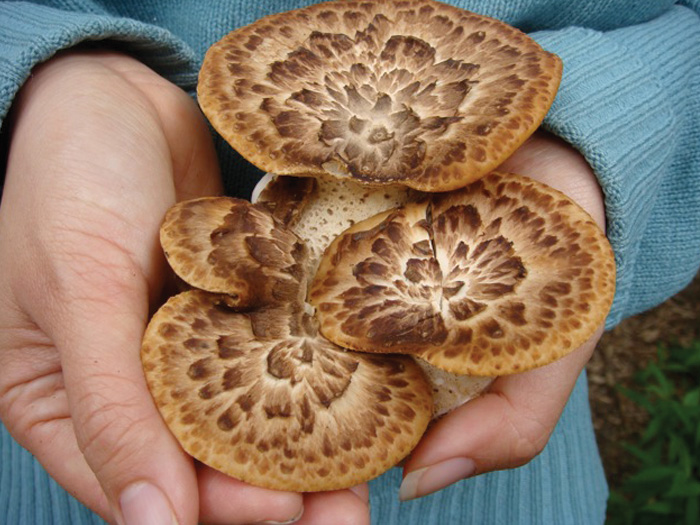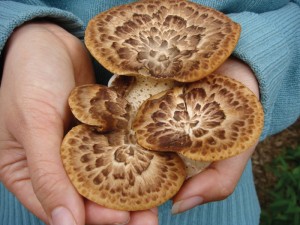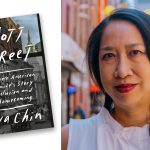Unbeknownst to many undergrads, CSI professors lead very interesting lives pursuing their passions beyond their areas of expertise.
Dr. Ava Chin, Associate Professor at the College of Staten Island spends much of her time on campus teaching Creative Non-Fiction and Journalism, and much of her time off campus foraging for edibles. This fondness fuels content for her New York Times’ City Room “Urban Forager” column, which appears online every other Saturday, and also in the Sunday Metropolitan section.

Dr. Ava Chin holds an impromptu lecture on the "deliriously delectable" wineberry for a group of Public Schoolers last year.
She discovered her fondness for found edibles while growing up in a Chinese family, Prof. Chin said. She ate mushrooms all the time in her grandfather’s cooking which stoked her curiosity for discovering exotic food items. As she grew more adventurous, she discovered that many of the items that made up her family recipes were growing in New York.
As Dr. Chin began collecting mushrooms, she realized she needed help in identifying her finds. “You have to be careful with mushrooms, some are poisonous while some are incredible edible,” said Chin.
That is when she discovered the New York Mycological Society (NYMS). The NYMS is a not-for-profit group of about 150 members who share an interest in mycology (mushrooms). The current group was co-founded by the composer John Cage and friends who had a fondness for the fungi and wanted to share their passion and expertise with others. Chin brought one of her early finds, a white button mushroom or agaricus bernardii, a wild cousin to the white button mushroom to her contact at the society, Gary Lincoff. “There was no way I was going to eat it without knowing it was safe,” she said.
Since then, Chin’s expertise at foraging has led her to be considered one of the top experts for foragers in New York. Her Urban Forager blog updates readers on where and when they can find certain delicacies throughout the year. Her most recent post centers around the Epazote weed, an ingredient that can be found in Guacamole dip as well as many other Mexican dishes. The people who make up her audience range anywhere from “survivalists to Freegans to people who are simply curious about food and nature.”
She says that being a forager has “changed the way I see the world.” On a visit to Stonehenge one summer, while other tourists marveled at the monuments, Chin spent most of her time noticing how many edible plants grew around the area. “You cannot not see it once you know it’s there,” she said.
While students do not always think of their professors of having lives outside the classroom, the Ava Chin who teaches at CSI and the one who blogs about foraging are one and the same. She teaches memoir writing and journalism at the college and is currently working on her own memoir about how she began foraging, to be published by Simon and Schuster. She is also aware that the internet age has changed the face of journalism forever. “Editors expect young journalists to blog and be tech-savvy,” said Chin. “I am always trying to prepare my students for real-world situations as writers.”
Ava Chin has a full plate as a writer, forager, and professor; and she loves every minute of it. “People contact me all the time to tell me about items they have found,” said Chin. There seems to be a certain Tao to being a forager, according to Chin. “A forager simply is,” said Chin. “You never know when a forager will pull over in a car to pick something up.”
You can find Ava Chin’s blog at http://cityroom.blogs.nytimes.com/author/ava-chin

















